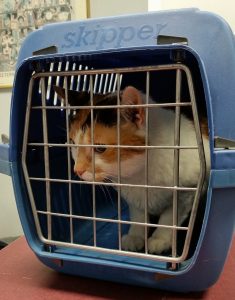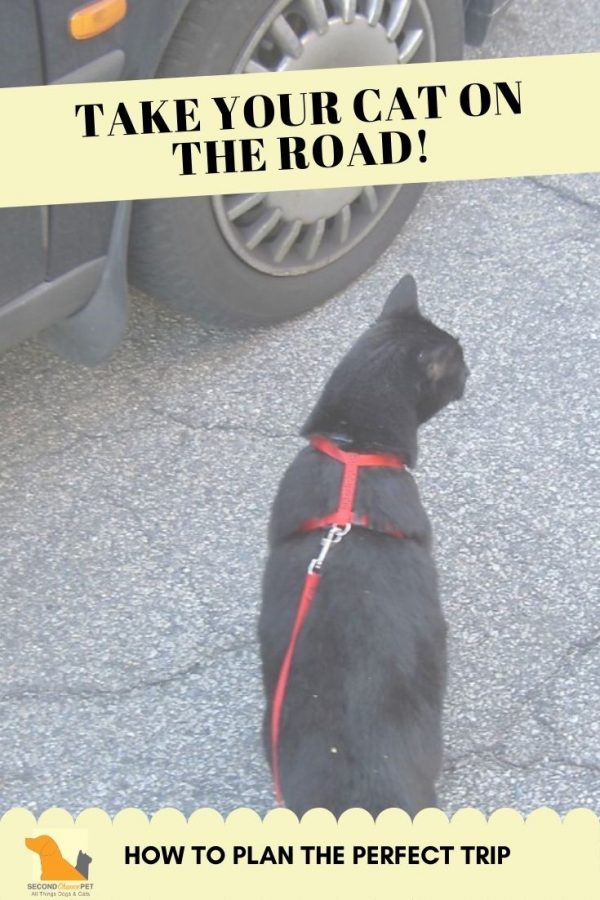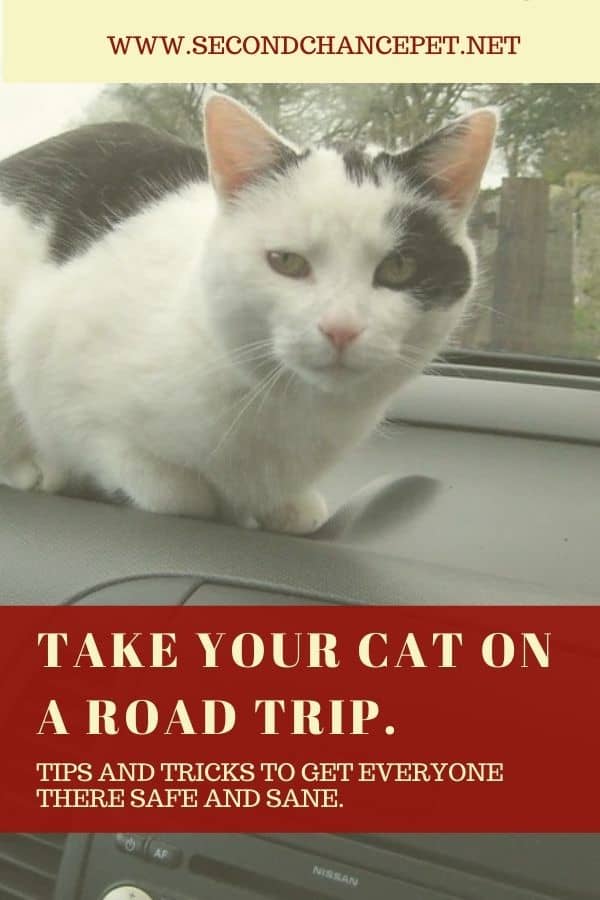Car travel with cats – on hearing these words, no one jumps up and exclaims “wow, that sounds like fun”! But traveling with your felines doesn’t have to be difficult. Here are a few tips to help you and your pet cope.
As an affiliate of Lovimals, I earn on qualified purchases.
IF YOUR CAT HAS NEVER GONE ON A LONG CAR TRIP BEFORE
Take a practice ride. Make sure you drive at least ½ hour outgoing, to make it a one-hour round trip. There are two reasons for this:
1. Acclimatization – One major cause of anxiety is unfamiliarity. Getting your cat used to being in the car for longer periods may lessen his fear.
2. Showing You What to Expect. Some cats will never be comfortable in a car, no matter how familiar it becomes. And there are few things worse than finding your yowling cat won’t stop yowling, when you’re hours away from her veterinarian’s office.
If your cat is still showing significant fear after a couple of practice runs, it’s time for a visit to the doctor. Constant noise, restlessness, or diarrhea are indicators that your pet may need some help from medication.
A PRE-TRIP VISIT TO THE VETERINARIAN
There are several medications used for anxiety in cats. All of the ones listed below should be used only if prescribed for that particular animal, and only for the short term. Your veterinarian will know which one to choose, depending on the health of your pet. Here are some possible choices:
• Acepromazine – mostly used for surgery – does prevent vomiting. Can cause low blood pressure, and, in rare instances, aggression.
• Busipirone – not generally used for anxiety, but has been shown to reduce marking and urination outside the litter box. Takes a number of weeks to work. Increases affectionate behavior. Possible other behavior changes
• Alprazolam – brand-name Xanax. NEVER give your cat human medication. Effective in reducing anxiety. This is a sedative and will make your cat sleepy. Other side effects include behavior changes, increased appetite, and trouble walking.
Remember, these medications are only to help with travel anxiety and not for long-term use.
DEALING WITH ANXIETY WITHOUT PRESCRIPTION MEDICATIONS
For milder cases of travel anxiety, try a Thundershirt for cats. If you’re not familiar with it, a Thundershirt wraps around the animal and provides constant, soothing pressure.
I have an anxious dog and find that, even though the Thundershirt doesn’t completely calm her down, it does help. And there is no medication involved. Put this on your cat at home several times to get her used to it, before leaving on your trip.
You can also try Rescue Remedy – a homeopathic formula which seems to work wonders in some animals. Because it’s natural, there should be fewer side effects.
While in the car, putting the radio on to some softer music, or a talk show or podcast, can give your pet some white noise to help soothe him.
With any luck, your cat will settle in nicely. But there are some supplies you’ll want to have on hand.
SUPPLIES TO MAKE CAR TRAVEL WITH CATS EASIER
CARRIERS

SOFT CARRIER
More comfortable for the animal, particularly if your route has a lot of curves or hills. A soft crate is also better ventilated as mesh is often used on all four sides. Purchase a small or medium crate for one cat, go larger if you’re transporting two or more. Some have room for a bowl and a litter box, but you’ll want to decide if you should include these while the car is moving.
HARD CARRIER
Hard-sided carriers are sturdier and safer if your cat will be spending time and energy trying to escape. These, too come in many sizes. Your choice should depend on how many cats you are transporting, and what you want included inside.
LITTER BOXES
Many cat owners I have spoken with don’t include a litter box in the crate at all. Cats are often too stressed to use it while traveling. If you decide not to include one, make sure you carry plenty of paper towels, or old bath towels to clean up the urine. Traveling without a litter box inside the crate gives the cat more room.
If your cat seems pretty well-adjusted in the car, you might want to include a litter box anyway. Otherwise you may not only have to wash down the crate but also the cat when you arrive at your destination.
Restricting access to food (but NEVER to water) on the evening before the trip can help make stress-induced diarrhea less of a problem.
WATER
Make sure to allow your cat access to water every few hours. Although you won’t want to feed them while in transit, fresh water is imperative to good cat health.
PREPLANNING YOUR TRIP (DON’T LEAVE IT TO CHANCE)
REST STOPS
It’s safer all around if you plan to eat in the car while on the road with cats. The temperature of the car can be maintained at a safe level for your pet, and you won’t have to worry about freak escapes by a determined feline. If your trip takes more than one day, plan on checking into your hotel and taking care of your pets. Once that’s done, you can go for a regular meal, and get a chance to stretch your legs.
Be careful at highway rest stops – an escaped cat will be gone in seconds. Best practice is to leave your cat crated at all times during a trip and plan on cleaning up afterwards. If you do decide to use a harness and leash walk, make sure all car doors and windows are firmly closed until your cat is securely leashed.

Yes, cats actually can be leash trained. Many years ago, I had a coworker who lived in an apartment next to a golf course. Her neighbors always chuckled as she’d walk by in the mornings wearing full makeup, and high heels, walking her cat along the edges of the course before work.
HOTELS
Make sure you plan ahead for this. “Pet-friendly” in a hotel description may mean dogs only. Call the hotel itself (not a national reservation line) and ask whether they accept cats. Make sure you find out the fee beforehand and avoid any expensive surprises.
The following are national chains which accept pets. However, each hotel unit has some leeway in making the decision whether to accept cats, so it’s always a good idea to call.
- Best Western
- LaQuinta
- Hilton
You may also find some independent hotels and motels which will allow your cat. The best way to ensure that your cat’s needs will be taken care of is to carefully plan each step of your trip.
CAT SAFETY
For your cat’s safety, both at home and on the road, please have your veterinarian microchip her. This is an almost painless procedure. If the worst happens and she bolts away from the car, you will have some peace of mind knowing that whoever finds her can then find you.
If you want extra benefits, you’ll have to pay a small renewal fee every year, but that’s not necessary. Most microchip companies will keep your cat in their database as long as you’ve registered at least once. However, it is imperative that you renew if you move – the data on the chip is only as good as its last update.
ARRIVING AT YOUR DESTINATION
If things go as they should, you and your cat should arrive at your destination safely and at least somewhat relaxed. And, once they’ve become good travelers, you know you can take them with you wherever you want to go.




